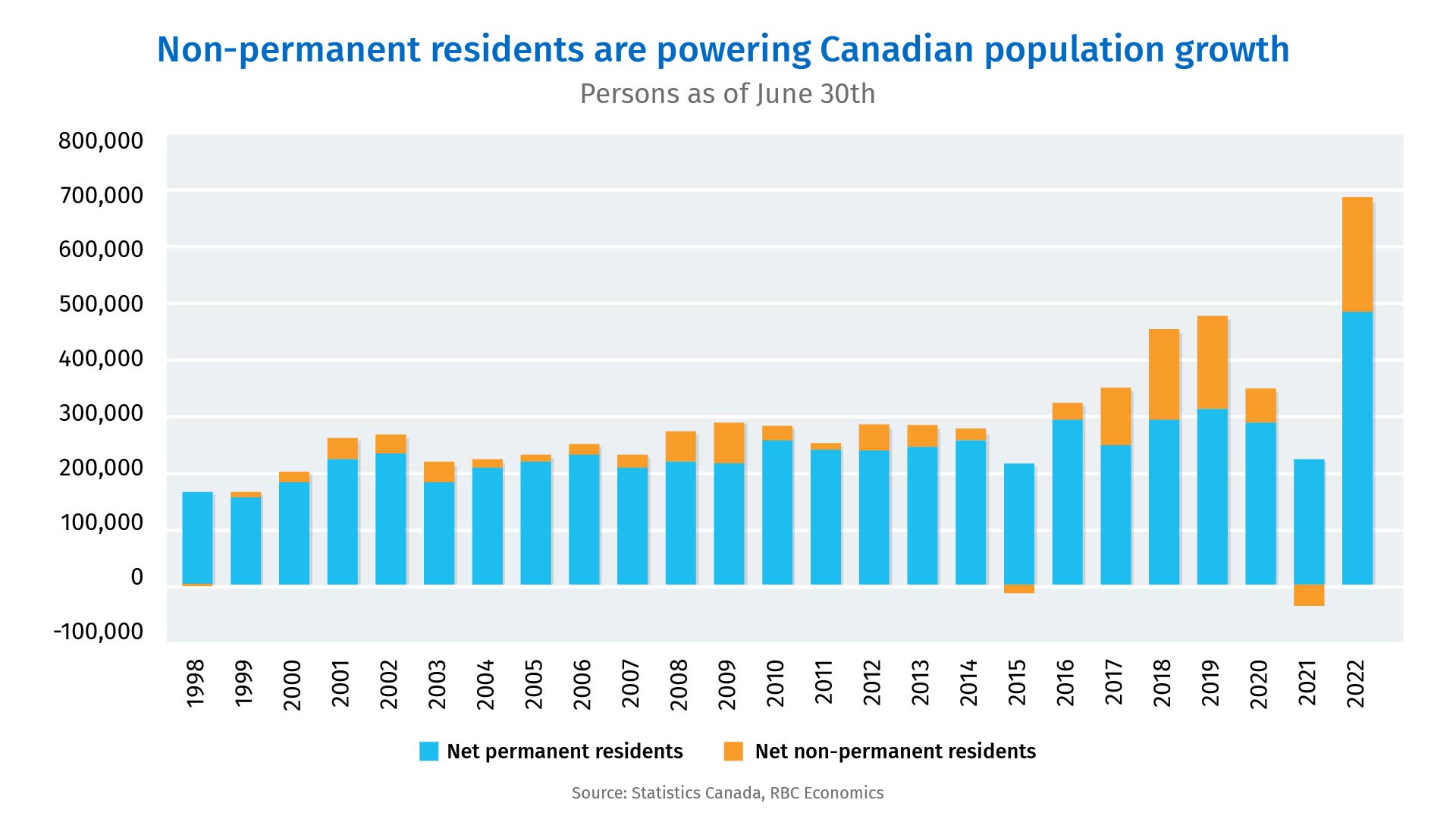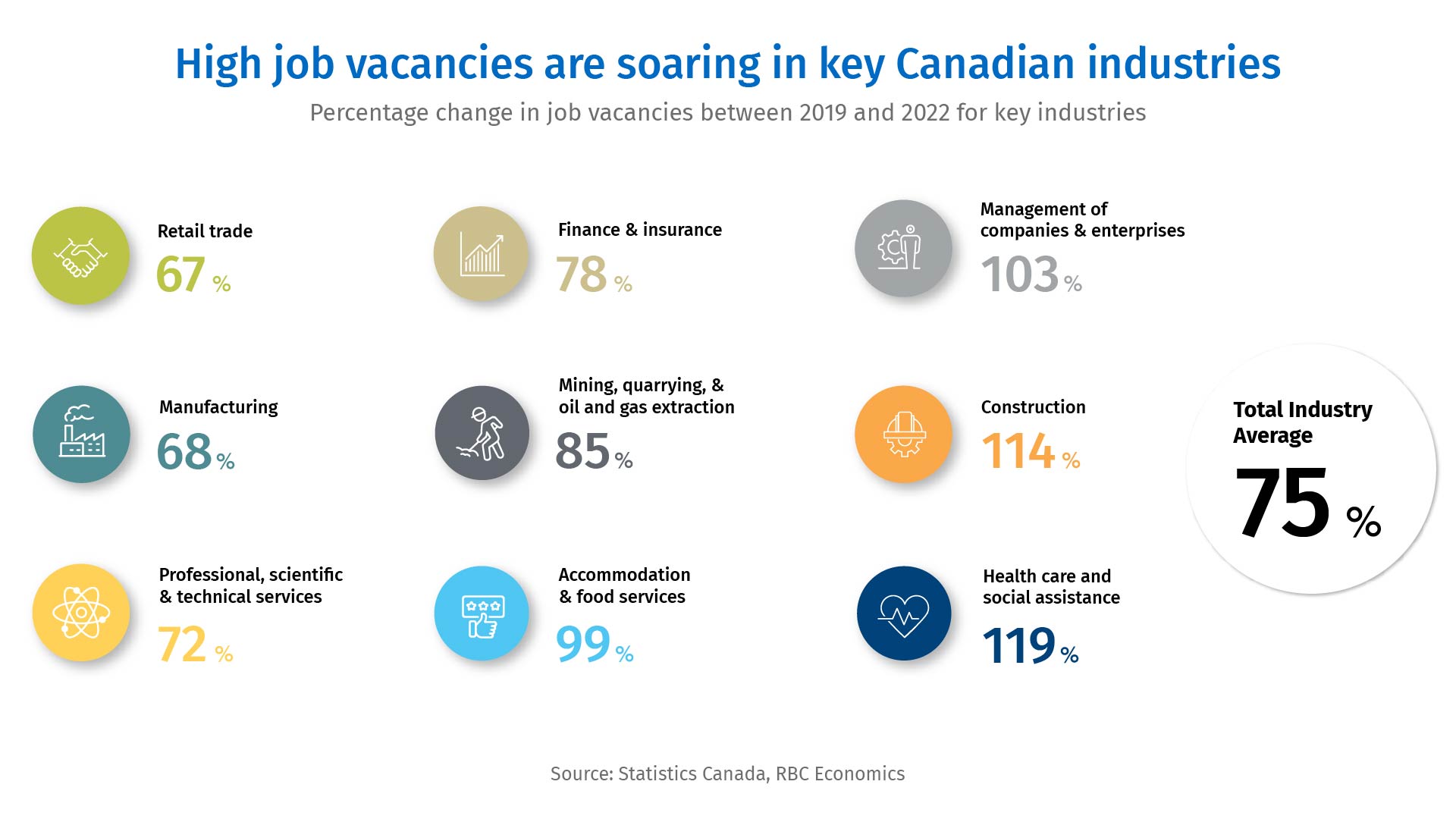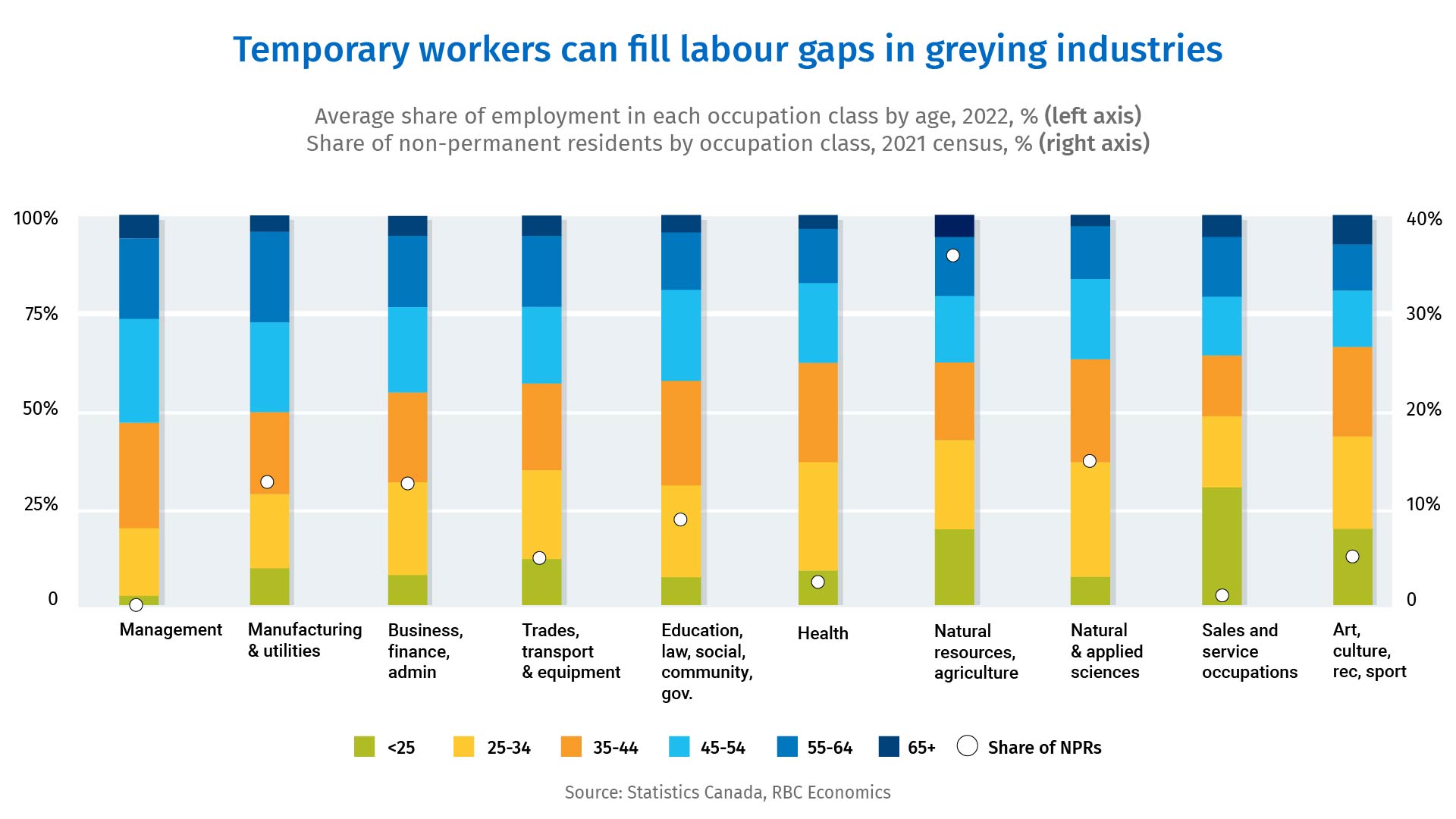- The ranks of non-permanent residents (NPRs) swelled in Canada following the pandemic, growing 53% between 2020 and 2022.
- Canada’s two-tiered immigration system has attracted the right candidates to match longstanding shortages in roles ranging from childcare providers to software engineers.
- But it’s been less successful in matching these skills to future shortages in industries facing looming waves of retirements.
- And the current, elevated intake of newcomers is set to slow as the system catches up with pandemic disruptions.
- The bottom line: As long-run demographic trends squeeze the workforce, Canada will need to maintain a high flow of NPRs. Shifting the mix of newcomers toward those with skills needed in greying industries is also important.
Canada’s population boom owes much to temporary residents
Temporary residents are becoming a powerful engine of Canadian population growth. In 2022, Canada issued over a million temporary work and study permits to prospective residents.
What’s behind the jump? Part of it can be attributed to a catch-up period following pandemic disruptions. The number of temporary work permits issued through Canada’s International Mobility Program (IMP) has risen significantly (+53% since 2019). Half were granted to newly-arrived Ukrainian refugees. But even without this group, IMP permit issuance has jumped 27% since 2019.
Canada’s international student population has also expanded. Roughly 1.25 million students were added between 2020 and 2022 and another 500,000 are likely to be brought in this year. In all, over half of economic immigrants today are emerging from Canada’s pool of NPRs.
A growing population means more demand for an already tight supply of housing and other services. NPRs have a role to play in bolstering the workforce to address that demand. But more action is needed to match their skills to emerging shortages.

Newcomers can fill both current and future labour market needs
While skilled workers hold a larger share of today’s overall mix of immigrants than ever before, the mix of NPRs by occupation itself has changed little since 2015—despite fast-approaching changes in the labour market.
That’s because programs such as the Temporary Foreign Worker Program (TFWP) predominantly support industries with perennial shortages of Canadian candidates. General farm workers account for close to half of all TFWP permit holders. Childcare providers, food service supervisors, cooks, and fish and seafood plant workers also rank prominently. The mix of IMP permit holders hasn’t changed much either. Information systems analysts and consultants, software engineers and designers, computer programmers and interactive media developers have topped the list since 2015.
The good news is the wave of newcomers has helped shrink the number of job vacancies in Canada. Since peaking in May 2022, unfilled positions are down more than 200,000 (or 21%) across the country. But progress has been minimal in a few sectors, including healthcare (short an astounding 144,000 workers), construction (short 64,000 workers) and a range of greying industries.

The next challenge: targeting greying industries and construction
The post-pandemic bump in NPRs is likely to run its course over the next five years as the intake of Ukrainian refugees slows and the system catches up with backlogs.
But as our population ages, pressure will only intensify to replace retiring workers. Indeed, roughly 4.3 million baby boomers are set to reach retirement age by 2033. Canada’s population will not naturally grow fast enough to fill these gaps and in the absence of immigration, a shortfall of at least 400,000 workers will open up. This will come at a time when a booming population heightens demand for housing, healthcare and other goods and services.
Certain industries are set to feel the pain more acutely than others. Roughly a quarter of workers in the manufacturing, utilities, business, finance, and administration, and trades and transportation industries will reach retirement age in the next decade. That’s over 800,000 workers. And as demand for housing grows, Canada will need to massively ramp up construction in the coming years—requiring a sharp increase in construction workers.
Canada’s intake of NPRs will need to remain above pre-pandemic levels for some time to fill the gap (as it stands, Canada doesn’t set targets for NPRs.) The mix of newcomers—including NPRs—will also need to shift along with emerging priorities. And as our previous research has shown, persistent labour market shortages across a variety of industries make lowering barriers to better utilization of newcomer skills more important than ever.

Rachel Battaglia is an economist at RBC. She is a member of the Macro and Regional Analysis Group, providing analysis for the provincial macroeconomic outlook.
Carrie Freestone is a member of the macroeconomic analysis group and is responsible for examining key economic trends including consumer spending, labour markets, GDP, and inflation.
Proof Point is edited by Naomi Powell, Managing Editor of RBC Economics & Thought Leadership.
This article is intended as general information only and is not to be relied upon as constituting legal, financial or other professional advice. A professional advisor should be consulted regarding your specific situation. Information presented is believed to be factual and up-to-date but we do not guarantee its accuracy and it should not be regarded as a complete analysis of the subjects discussed. All expressions of opinion reflect the judgment of the authors as of the date of publication and are subject to change. No endorsement of any third parties or their advice, opinions, information, products or services is expressly given or implied by Royal Bank of Canada or any of its affiliates.


 Learn More
Learn More